“Coppens, Belgium’s Greatest Ace” by Paul Bissell
THIS week we present another of Paul Bissell’s covers for Flying Aces! Bissell is mainly known for doing the covers of Flying Aces from 1931 through 1934 when C.B. Mayshark took over duties. For the November 1932 cover Bissell paints one of Belgium’s greatest Aces in action—Lt. Willi Coppens trying to take down a balloon!
Coppens, Belgium’s Greatest Ace
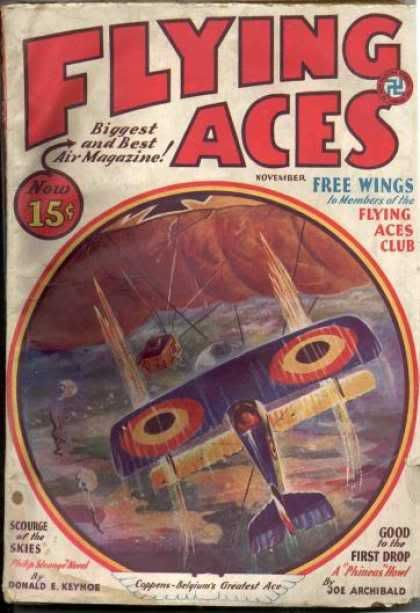 THE sun had set, and soon night for a few short hours would throw her peaceful blanket of darkness over the gaping wounds of war that now scarred the once beautiful fields of Flanders.
THE sun had set, and soon night for a few short hours would throw her peaceful blanket of darkness over the gaping wounds of war that now scarred the once beautiful fields of Flanders.
Above, where the sun’s rays still shone from beyond the far horizon, a tiny speck could be seen. Below, on the shell-torn earth, a crew was slowly hauling down a huge yellow sausage with black crosses painted on its sides. Anxiously the officers in charge watched the sky above until sudden recognition of the tiny speck brought hurried orders from their lips. Coppens, the little black devil of the Belgians, was on the wing!
Since the outbreak of the war, Willi Coppens had been in the service of his country. He had enlisted on the 28th of July, serving first as a despatch rider for the 6th Division, and then in other positions of both danger and trust but always with his eyes to the sky, his heart set on the “chasse.â€
Three long years of this, then six months of observation, reconnaissance and artillery fire direction, until, in April, 1918, his great ambition was gratified at last. In the past six months he had made himself the terror of the Huns and the idol of his nation. Thirty-three balloons and two planes had fallen to his attack. He was premier ace of the Belgians and premier balloon-buster of the world.
NOW, October 14, 1918, his .small, dark-blue plane with the red, yellow and black circles of Belgium on its wings was once again bringing death and destruction to the invaders of his beloved country.
Down he swooped through the hail of shrapnel and machine-gun fire, his gun spitting incendiary bullets into the great yellow bag below. . . . At the last moment he veered off, banked up on one wing, then as quickly reversed, executing a tight S, his nose down and hugging the balloon as closely as he dared, to gain what little protection might be had through the enemy’s fear of hitting their own observers.
His throttle shot forward as he gave his little Nieuport the gun and dived down under the balloon with terrific speed. Back came the stick—the tiny blue plane shot upward—higher—higher—up into a stall when another instant would have sent it crashing into the swinging balloon.
Now a shift of the release lever, and from the chute on either side six flaming rockets, like meteors against the late afternoon sky, soared through the air with deadly accuracy toward the sausage. In their wake a trail of sparks showered downward, and the plane hung for an instant on the prop. Then its nose flopped down through the drifting sparks. A quick kick of the rudder avoided collision with the big cable by which the Germans were desperately trying to haul the clumsy bag to the ground.
The plane dropped like a plummet. Coppens eased up on his throttle slightly, then leveled off, at last clear of the balloon—and none too soon. The rockets buried themselves in the bulging silk and then, an instant later, there was a terrific burst of flame and smoke. Great fiery tongues leaped hundreds of feet into the air, and the big bag collapsed, falling to the ground and burning fiercely.
Machine guns clattered madly while high explosives and shrapnel once again rent the air in their effort to find the tiny plane. He was almost away, a tiny speck against the darkening sky, when a shrapnel burst squarely in his path. His left leg went numb. The Nieuport shivered as he almost lost control. The little black devil was winged at last!
THE war was over. The invader had been driven out and peace once again reigned. In the warm July afternoon, on one of Belgium’s great air fields, a small army had drawn up in battalion formation. To one side, an area roped off was filled to overflowing by a crowd in holiday attire. Flags were flying and bands playing. On the line a row of planes stood ready, their wings and bodies shining from careful grooming. For on this day a grateful nation was honoring one of its heroes.
A large plane could be seen in the distance. Quickly it approached, circled the field, then landed easily and taxied down near to wrhere a small group was standing in front of the battalions.
The crowd surged restlessly, then broke into tumultuous acclaim as a tall figure stepped from the plane and the bands crashed into the national anthem of the Belgians.
“—And a grateful nation and King salute you, Captain Coppens, Officer of the Order of Leopold.â€
The King stepped forward to pin a small ribbon on the breast of the slim aviator in front of him, an aviator whose face was still pale from recent illness and whose left trouser leg flapped loosely against wood instead of bone and flesh. This lad supported himself with two canes, but one of these fell to the ground when he held out his hand to His Majesty.
Several officers started forward to recover the stick, but the King was first. He retrieved the stick quickly and with a gracious, “Permit me, mon Capitaine,†he handed it to Coppens. The crowd roared. A king had stooped to serve a humble subject—and a monarch had proved himself regal.

“Coppens, Belgium’s Greatest Aceâ€
Flying Aces, November 1932 by Paul J. Bissell





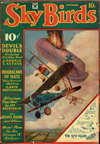
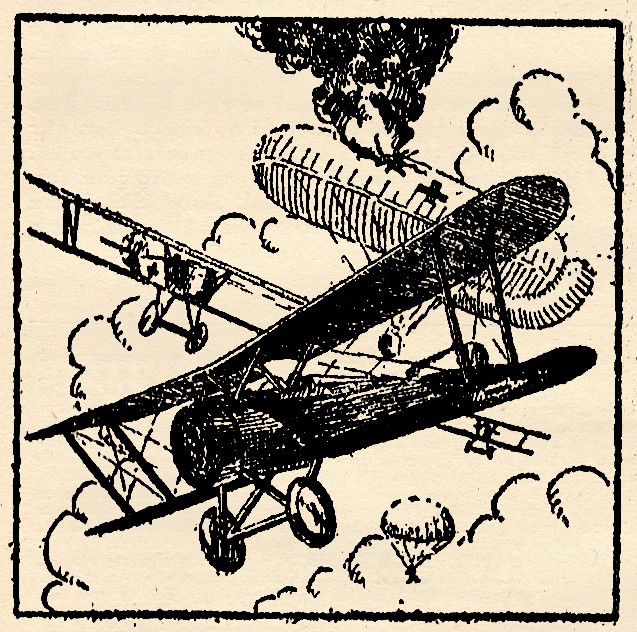
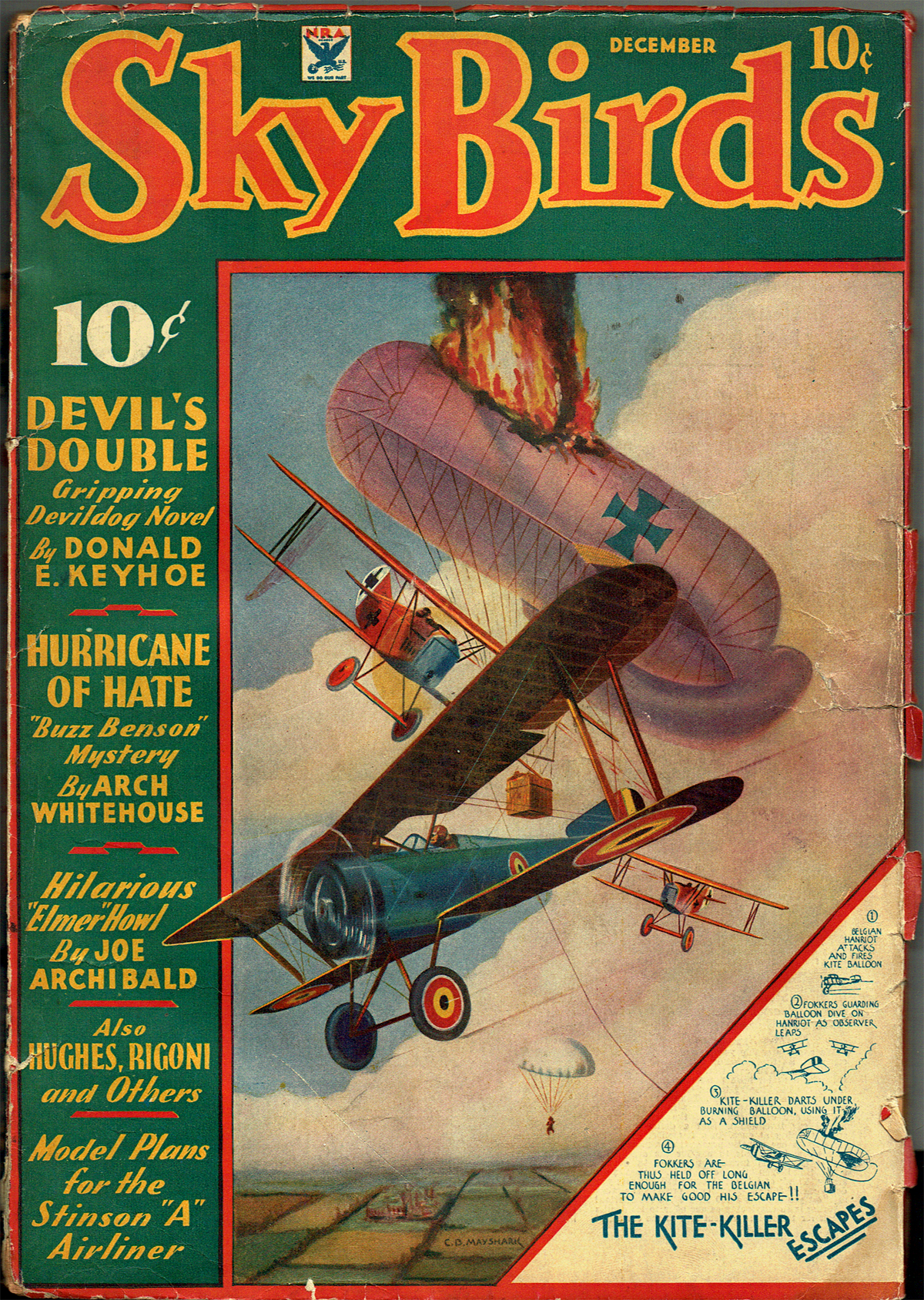
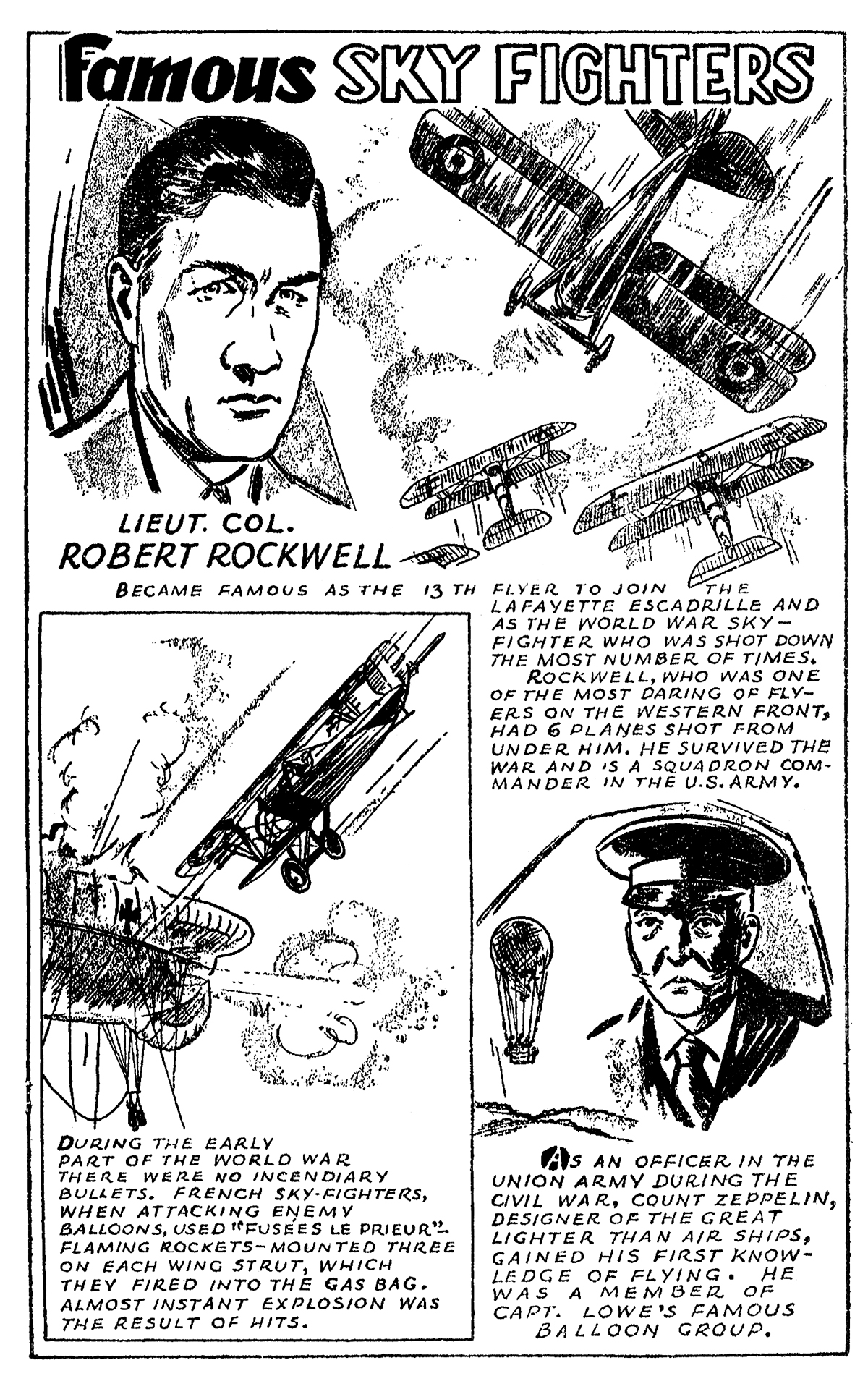
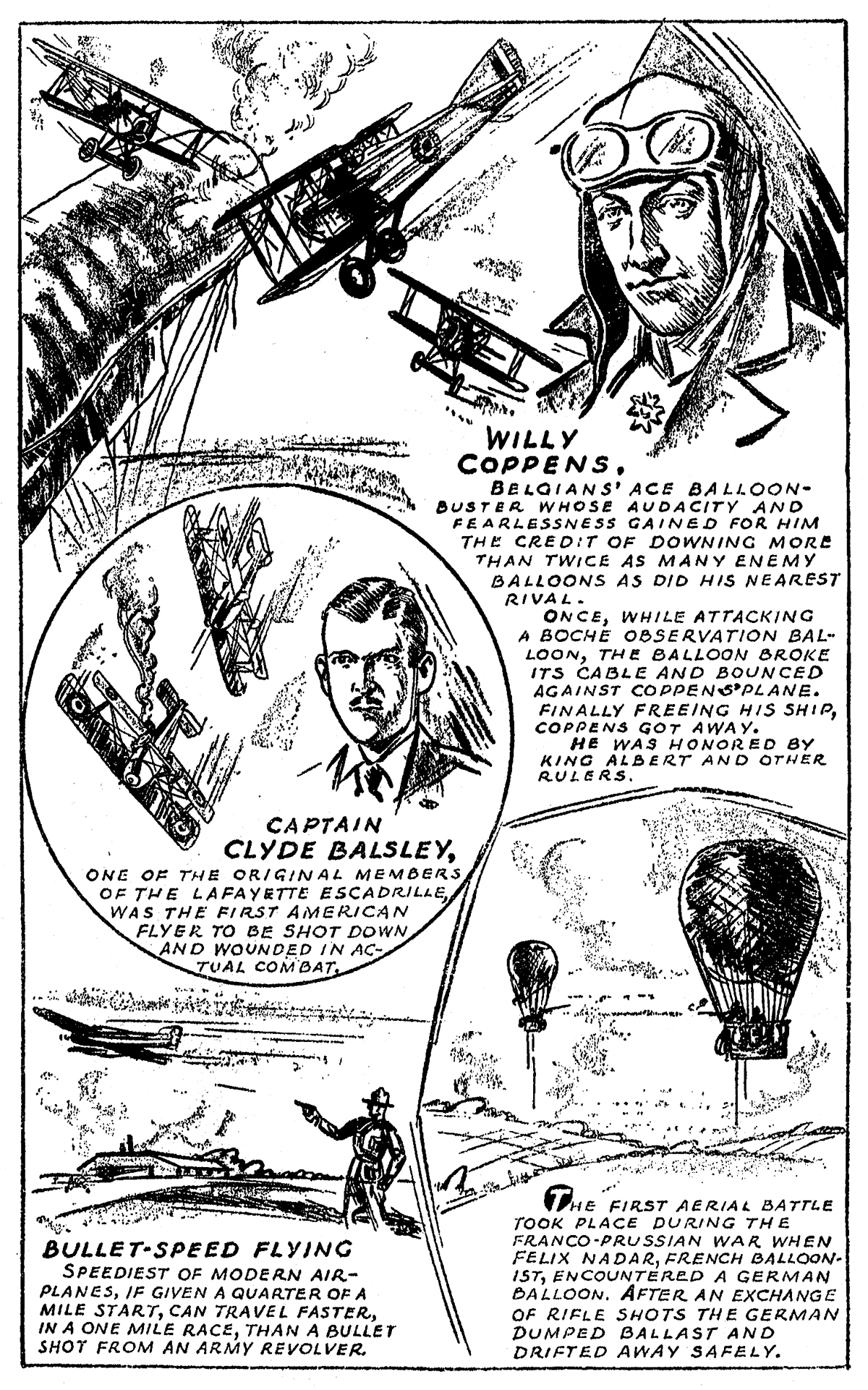
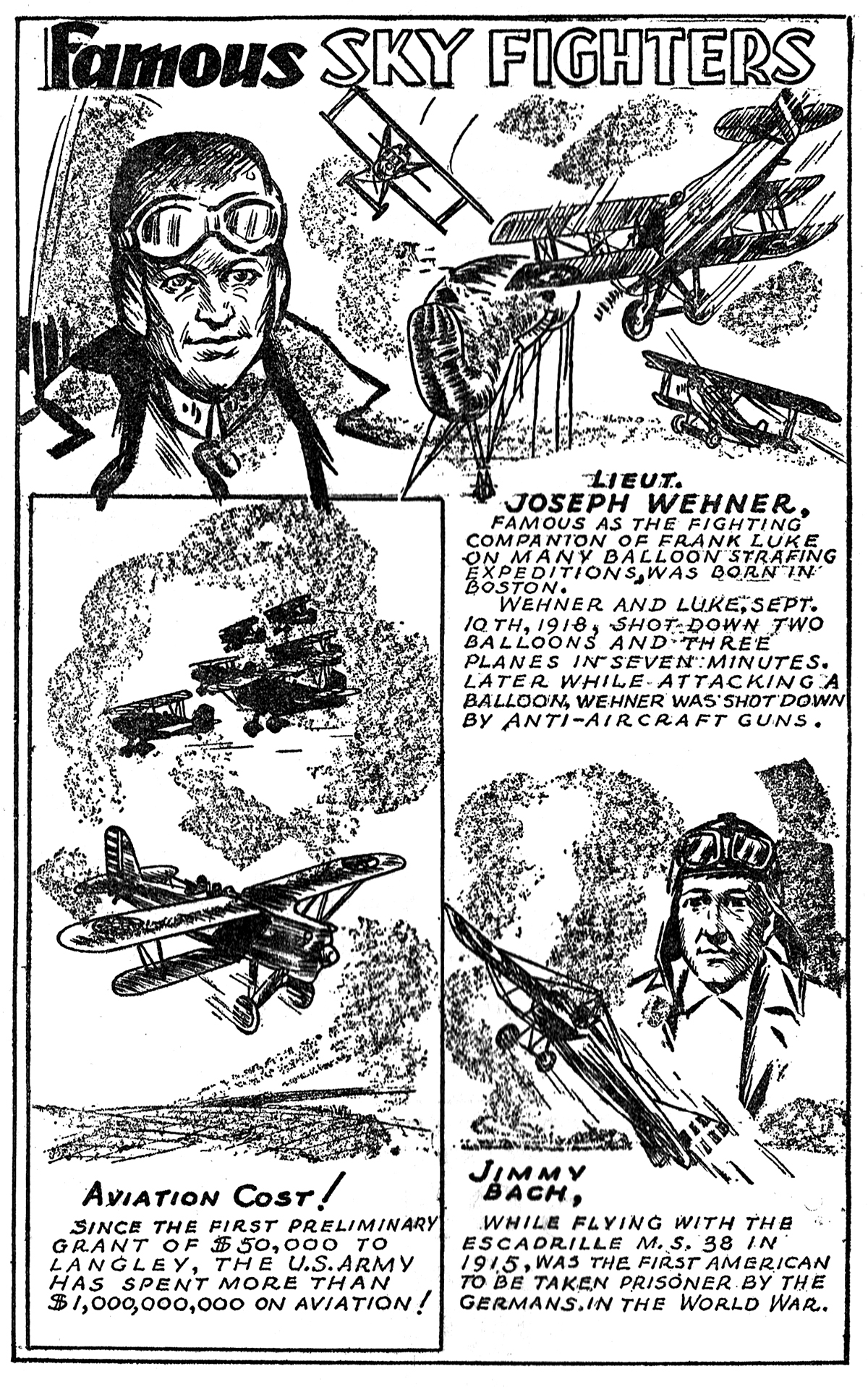

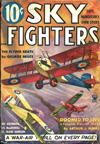
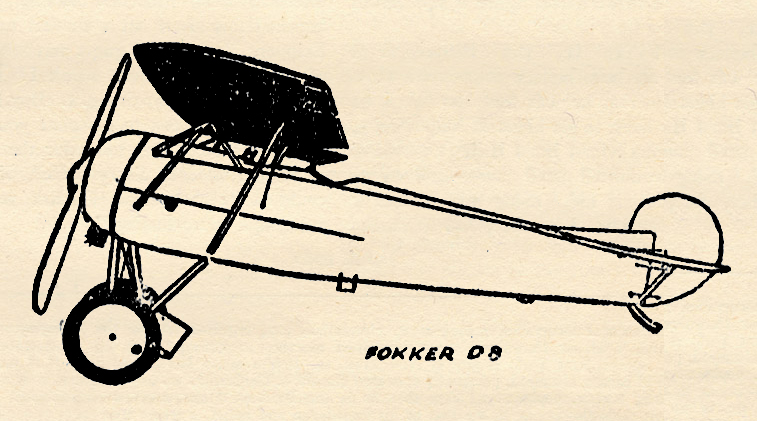
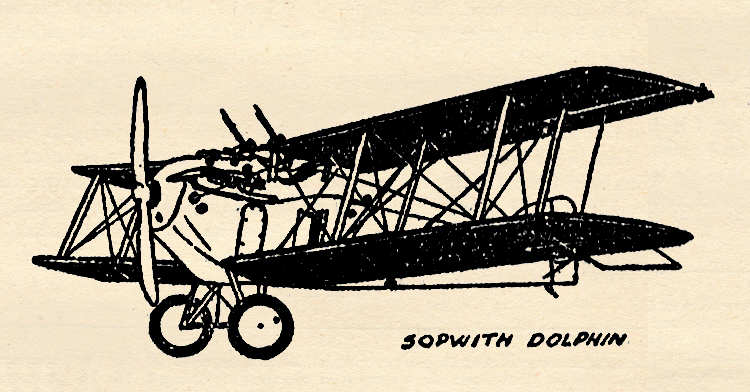
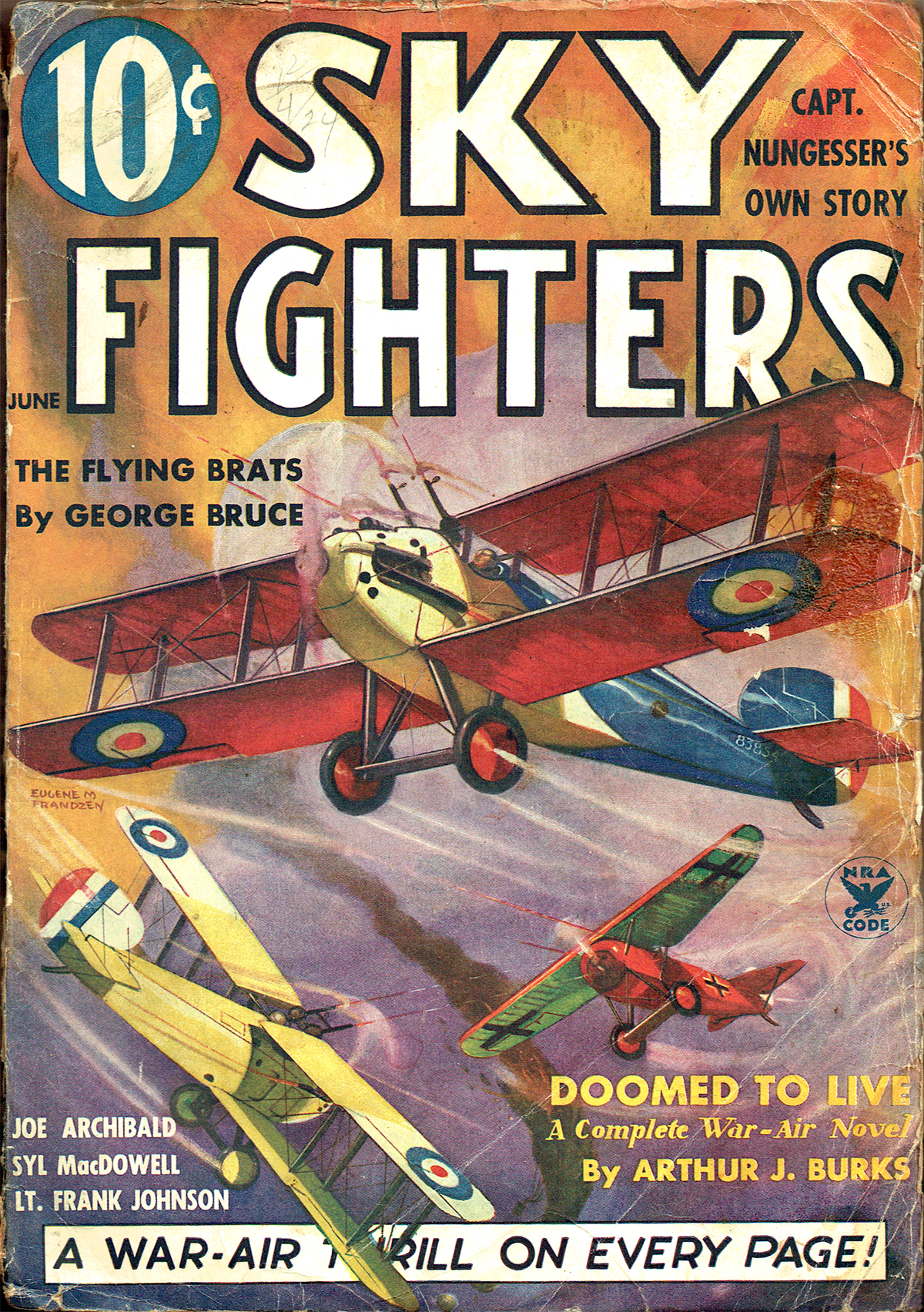
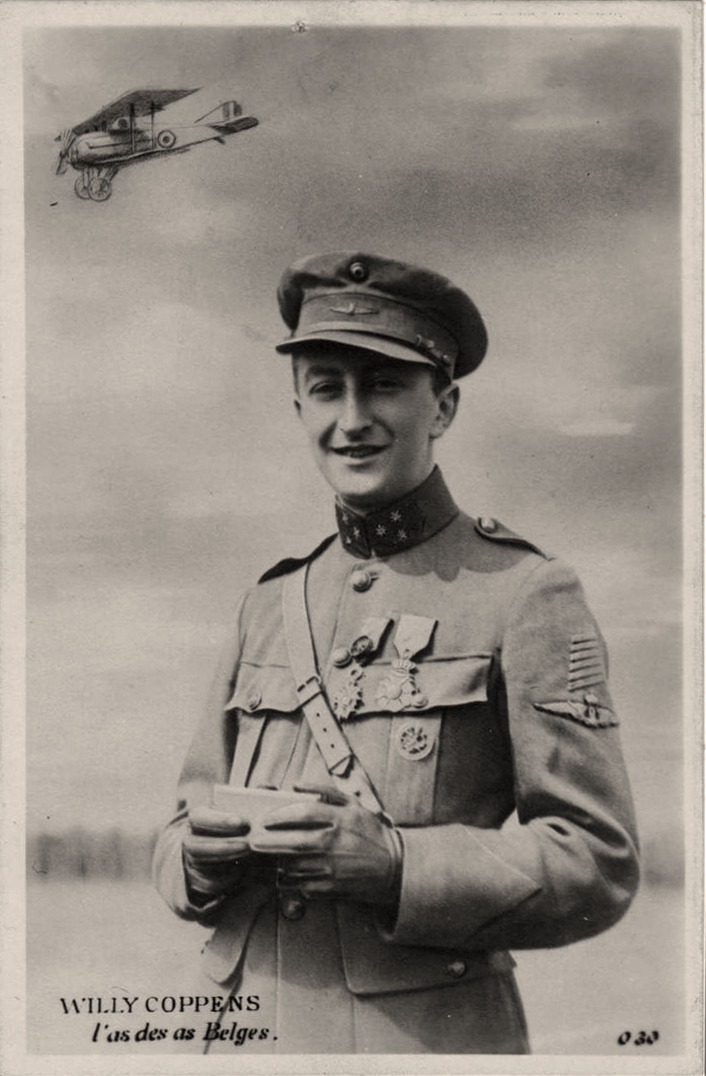
 Belgian Ace of Aces. He got his initial training as a soldier and officer in the cavalry division of the army. He transferred later on to the Flying Corps and began immediately to compile the record of victories that gained him top ranking among sky fighters.
Belgian Ace of Aces. He got his initial training as a soldier and officer in the cavalry division of the army. He transferred later on to the Flying Corps and began immediately to compile the record of victories that gained him top ranking among sky fighters.